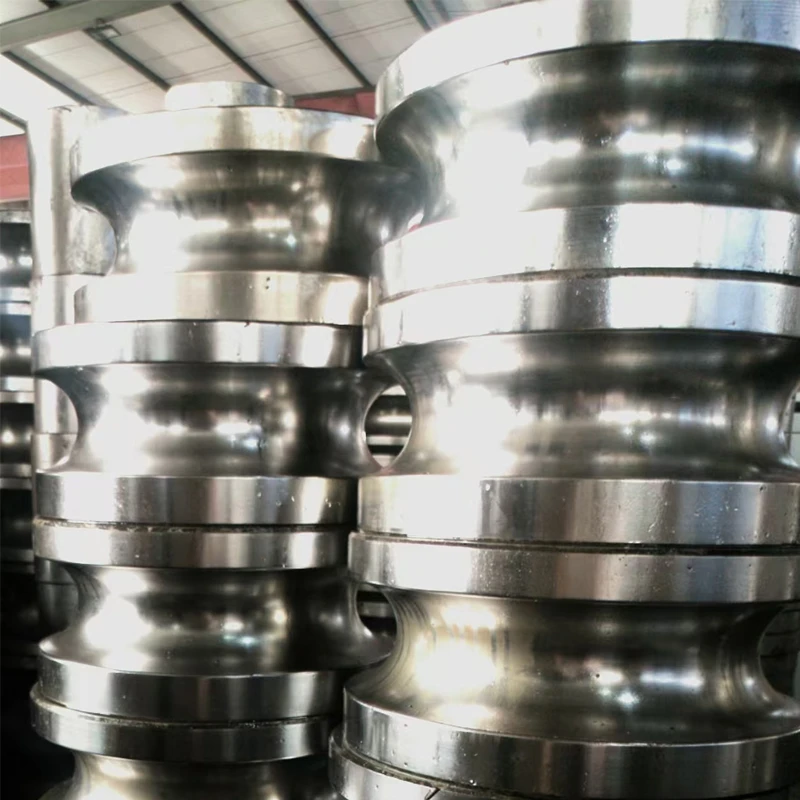steel roll forming machine
Understanding Steel Roll Forming Machines A Comprehensive Overview
Steel roll forming machines are essential tools in the metalworking industry, facilitating the production of various steel components with high precision and efficiency. These machines are designed to transform flat steel sheets into specific shapes through a sequential bending process, making them invaluable in sectors such as construction, automotive, and manufacturing.
The Functionality of Steel Roll Forming Machines
At its core, a steel roll forming machine works by feeding flat sheets of metal into a series of rollers, which reshape the material incrementally. Each roller is meticulously crafted to bend the steel in a specific way, gradually forming it into the desired profile or shape. This process occurs continuously, allowing for mass production of uniform components with minimal waste.
The versatility of coil-fed roll forming enables the production of a wide range of products, from simple shapes like angles and channels to more complex profiles such as Z-purlins and C-sections. This flexibility is one of the key advantages of using roll forming machines, making them an integral part of modern manufacturing operations.
Components of a Roll Forming Machine
A typical steel roll forming machine consists of several critical components
1. Feeding System This system feeds the flat steel sheets or coils into the machine at a consistent rate. It often includes a straightener to ensure that the material is perfectly flat before it enters the roll forming process.
2. Roller Frames These frames hold the rollers that shape the steel. Each set of rollers is designed for a specific profile and is positioned at precise angles to ensure accurate bending.
3. Cutting System After the steel has been formed into the desired shape, it often needs to be cut to length. Various cutting methods can be employed, such as flying cuts, which occur during the forming process without stopping the machine.
4. Control System Modern roll forming machines feature advanced control systems that allow for precise adjustments and monitoring throughout the forming process. This includes controlling the speed, pressure, and tension to ensure optimal performance.
5. Collection System Once formed and cut, the finished products are directed to a collection area where they can be easily handled, packed, or transported for further processing.
steel roll forming machine

Advantages of Steel Roll Forming Machines
The use of steel roll forming machines comes with numerous benefits
- Efficiency These machines operate continuously and can produce large volumes of finished products in a relatively short time, reducing production costs.
- Precision The technology behind roll forming ensures that components are manufactured to exact specifications, minimizing errors and rework.
- Material Savings The process generates less waste compared to other metal forming methods, making it more environmentally friendly and cost-effective.
- Strength and Durability Products made by roll forming typically exhibit high strength-to-weight ratios, which is essential for applications requiring durable materials.
- Customization Manufacturers can design custom profiles tailored to specific applications, enhancing versatility and market competitiveness.
Applications of Steel Roll Forming Machines
The applications for steel roll forming machines are vast. In construction, they are used to create roofing materials, wall panels, and structural supports. In the automotive sector, roll forming is employed to manufacture various components such as frames and reinforcements. Additionally, the manufacturing of furniture, trailers, and other metal products also relies on this efficient forming technique.
Conclusion
In conclusion, steel roll forming machines represent a cornerstone of modern manufacturing. Their ability to produce precision-engineered steel components efficiently and economically makes them a crucial investment for companies aiming to meet the demands of today's fast-paced industrial landscape. As technology advances, these machines are expected to become even more efficient, offering enhanced capabilities that will further revolutionize metal forming processes. Understanding the mechanics and benefits of these machines is essential for any manufacturer looking to optimize their production capabilities and stay competitive in the market.
-
High Frequency Straight Seam Welded Pipe Production Line|BzZhou Xinghua|Precision Welding&EfficiencyNewsJul.30,2025
-
High Frequency Straight Seam Welded Pipe Production Line - BzZhou Xinghua|Precision Engineering&EfficiencyNewsJul.30,2025
-
High-Frequency Straight Seam Welded Pipe Production Line-BzZhou Xinghua Machinery Equipment Manufacturing Co., LTD.NewsJul.30,2025
-
High-Frequency Straight Seam Welded Pipe Production Line-BzZhou Xinghua Machinery Equipment Manufacturing Co., LTD.|Precision Manufacturing, High EfficiencyNewsJul.30,2025
-
High Frequency Straight Seam Welded Pipe Production Line-BzZhou Xinghua Machinery Equipment Manufacturing Co., LTD.|Precision Steel Pipe Manufacturing&Industrial EfficiencyNewsJul.29,2025
-
High-Frequency Straight Seam Welded Pipe Production Line-BzZhou Xinghua Machinery Equipment Manufacturing Co., LTD.|Precision Steel Pipe Manufacturing&Industrial EfficiencyNewsJul.29,2025


